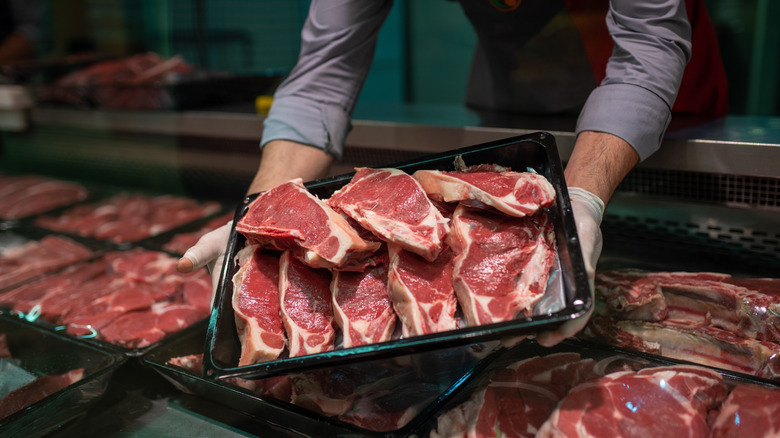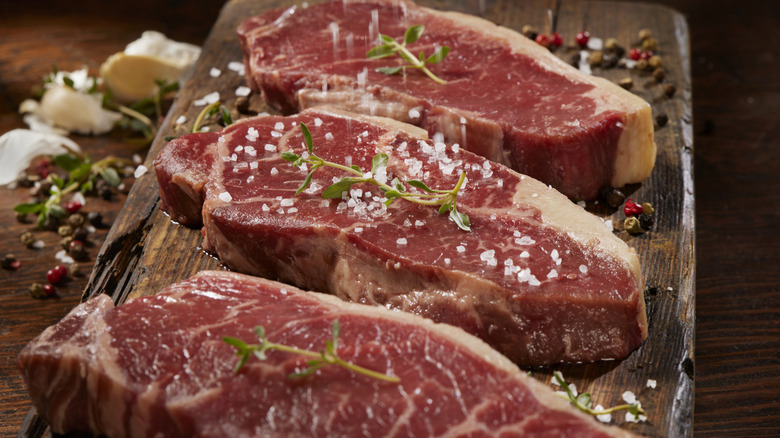Which Steaks Are Best Served Rare?
Every type of steak is delicious, but not all of them benefit from the hot and short cooking times required to serve it rare. While you can cook some steaks from rare to well-done, other cuts are always best served rare, thanks to their natural marbling and texture.
When you ask yourself, "What is the best steak to eat rare?" think about cuts like top sirloin, filet mignon, rounds, and strips. These steaks don't have a lot of obvious marbling, so you should avoid cooking them to medium-rare or higher unless you want them to dry out and grow tough as leather. However, when prepared in a piping hot pan with some high-heat oil, you can sear each side to develop a beautiful Maillard crust while keeping their interiors red and juicy. When prepared correctly, they remain tender and have a much meatier mouthfeel and flavor compared to marbled cuts like ribeye, which are typically more buttery and rich.
If you have a large, lean cut like flank steak, it's absolutely perfect for grilling over a high flame. Since they don't have much marbling, you don't have to worry about excess fat dripping on coals or wood and causing flare-ups. Plus, marinades help them retain tons of juiciness while still developing some rustic char. While lean steaks aren't completely foolproof for beginners the way rib steaks are, there are plenty of tricks, condiments, and finishers that all but guarantee a great end result.
How to upgrade lean, rare steaks
Taking your lean steak to the next level is relatively easy, provided you identify what specific aspect of the cut you want to improve. Whether you want to make your cut more tender or just make them extra juicy, you have a range of options from acid-based marinades to a simple pat of butter.
If you're worried this might overcook them and want to guarantee juiciness, learn how to make some essential butter sauces that add extra moisture and complement your steak's seasonings. This has the benefit of adding some extra fat to your meal, increasing the hearty and satisfying taste you'd find in richer cuts without overwhelming the inherent meatiness of lean steak. Even just using a pat of butter as a finishing ingredient can drastically improve its taste, especially when paired with a sprinkle of flaky finishing salt.
Marinades are perfect for adding taste, tenderness, and juiciness to lean steaks, but too much acid can ruin them. While acidic ingredients like vinegar and citrus juice help tenderize muscle fibers and make even the toughest cuts soft as gently cooked prime rib, overmarinating your meat makes it mushy. Most lean cuts still need at least two hours to soak up the flavors, but try not to go any longer than six to ensure they keep their meaty texture.


